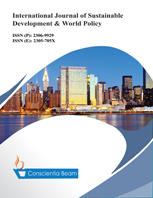Land Use/Land Cover Change and its Effects on Bamboo Forest in Benishangul Gumuz Region, Ethiopia
DOI:
https://doi.org/10.18488/journal.26/2016.5.1/26.1.1.11Abstract
Bamboo deforestation has become a serious problem in Ethiopia threatening the bamboo biodiversity and the people who depend on bamboo income. Previous studies mostly emphasize on mechanical, physical and biological characterization of the lowland bamboo. Earlier studies rarely relay on measuring the trend and magnitude of bamboo deforestation. The purpose of this study is, therefore, to examine the rate and magnitude of bamboo deforestation and identify the driving factors of LU/LC change. Data for the study were obtained from geographic information system (GIS) with ground verification. To supplement the GIS and normalized difference vegetation index (NDVI) result, a random sample of 384 households was interviewed. In addition, key informants interview and focus group discussions were held to validate the required data. The result generally revealed the declining state of bamboo forest over the past 26 years. The 2006 year’s NDVI value shows that a household owned 3.846 hectares of forest land. The result indicated a decline in forest to 2.027 hectare in 2012. The result showed 52.704 percent decline in forest land cover. Moreover, the survey result indicated that from 2009-2013, about a 0.014 hectares of bamboo forest was converted to agricultural land. On average, a household has converted an average of 0.081 hectares of forestland into agriculture land. Our evidence also shows that the lowland bamboo forest cover in the region has devastated due to anthropogenic and natural factors. This result implies that if the same trend continues, the available bamboo stock will vanish in shorter period of time. Therefore, quick rehabilitation and mass bamboo restocking policy shall be designed by the regional government in order to regenerate and conserve the lowland bamboo resources.

